Best delay plugins 2025: Add depth and dimension to your mixes with these must-have plugins
From self-oscillation to digital emulation, these are the best delay plugins for your productions
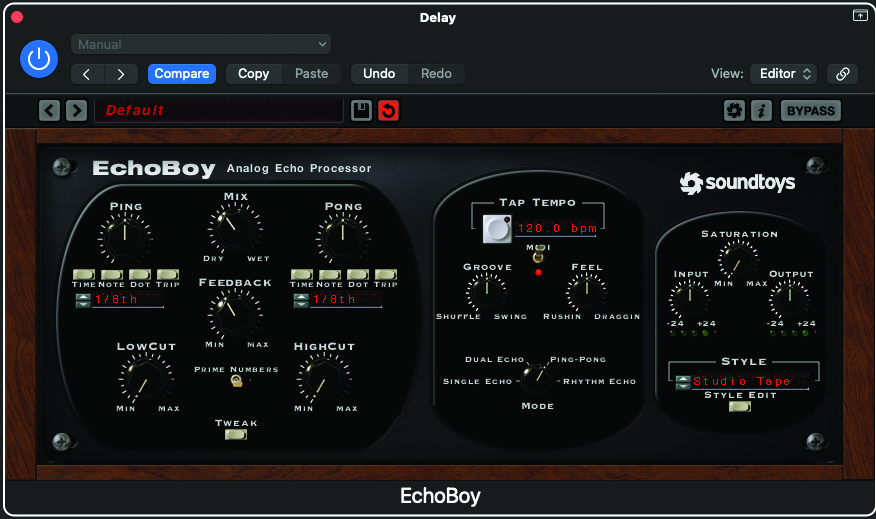
Like the repeats of an infinitely oscillating tape, delay plugins are both numerous and seemingly perpetual - going by the number of options available to the modern producer, that is. But the best delay plugins do something that all the others don’t. Whether that’s replicating a classic tape machine down to the dropouts and specific flutter, or digital delays that give you endless customisation options in the stereo field and across the EQ spectrum.
Delay plugins can handle myriad production tasks for the creative music maker, too. You can use them to enhance the depth and dimension of your tracks, add warmth and make things sit better in the context of the mix. Alternatively, you can launch said tracks into another cosmos with wild, infinitely repeating swells of noise that can overwhelm even the most flagrant noise hound.
With so much choice and variety available, we decided to put together a handy delay plugin guide for producers and mix engineers both budding and seasoned, with the aim of narrowing down the countless options to some choice picks for your productions.
If you’d like to learn more about the pings and pongs of delay, then be sure to check out the buying advice section at the bottom of this article. Otherwise, keep scrolling to see the best delay plugins available today.
Best delay plugins: Our top picks
It took us a while, but we finally settled on our number one delay plugin. For pure versatility and amazing sound, you just can’t beat Soundtoys EchoBoy. With 30 different delay types and a huge range of parameter controls, you’ll find this bad boy on tracks from Kenny Beats, Trent Reznor, Chvrches and many more big-selling artists.
If you’re on a budget, then you should definitely have a look at Native Instruments Replika XT which, despite its comparatively modest feature set, is actually one of the most versatile delay plugins you can buy. Considering the cost you get a lot for your money, and its ability to run in single, parallel and serial modes will make it an invaluable addition.
Best delay plugins: Product guide
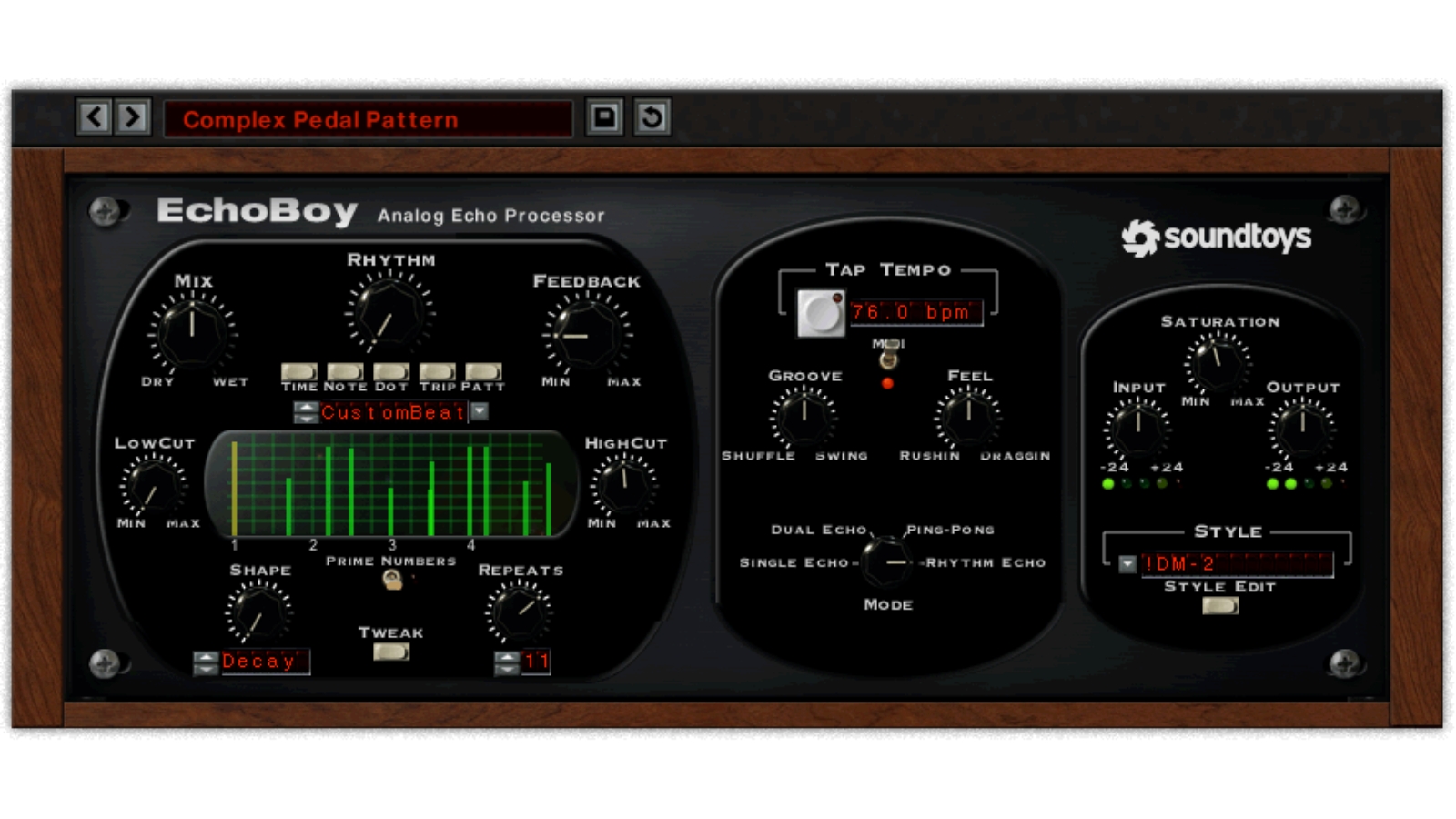
1. Soundtoys EchoBoy
Our expert review:
Specifications
Reasons to buy
Reasons to avoid
Based on classic echo machines of the past like the Space Echo, DM-2, and Memory Man, Soundtoys EchoBoy still manages to feel like an advanced piece of technology - despite the backward-looking ethos. With more features and greater ease of use than the majority of delay plugins out there, it’s sitting at the top of the list for some very good reasons.
The GUI is straightforward enough that even someone without a lot of experience can easily get to grips with it. All your basic delay controls - like mix, feedback, and time - are present and accounted for, with everything laid out in one handy window so you don’t have to menu dive. There are some ‘floating’ parts, too, but everything stays on the same page, which we love.
The sound itself is something else. Yes, it’s got that analogue warmth we ‘in-the-box’ mixers crave, but even just using the presets we find that, suddenly, that vocal track is sitting so much better. It emulates old-school echo hardware, but still manages to impart its own voice, and that’s what makes it a modern classic.
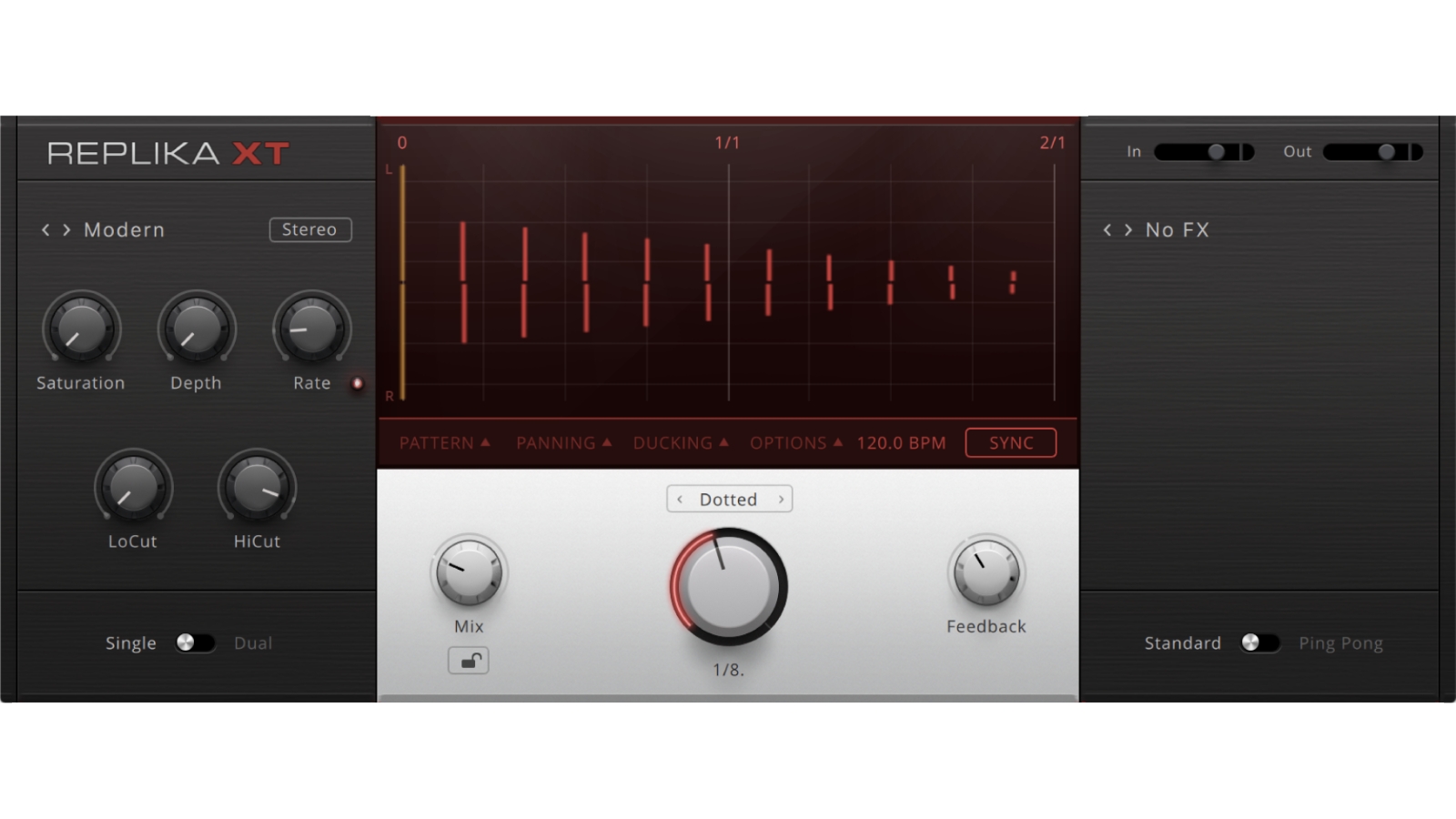
Specifications
Reasons to buy
Reasons to avoid
On the surface, Native Instruments Replika XT is a very straightforward delay plugin. You won’t find a million different options for parameter adjustment here, just simple and usable delay sounds. Despite this, if you want to do some deep editing, it’s hiding a few tricks beneath its slick exterior.
The easy-to-use display makes it a breeze to dial in your delay sounds, with all your regular rate and EQ controls in the centre, effects on the right, and effect-specific parameters on the left. Beyond this, there are options for editing dry and delay signals separately, pattern controls, timing offset, and even ducking in single mode.
With delay models like Tape, Analog and Diffusion to name just a few, you’ve got plenty of flexbility, and that’s before you get into the effects. You can add seven different modulation processors - such as chorus, phase, and filters - to help make your sounds out of this world, or just dial in a touch of colour to keep things interesting.
Read our full Native Instruments Replika XT review
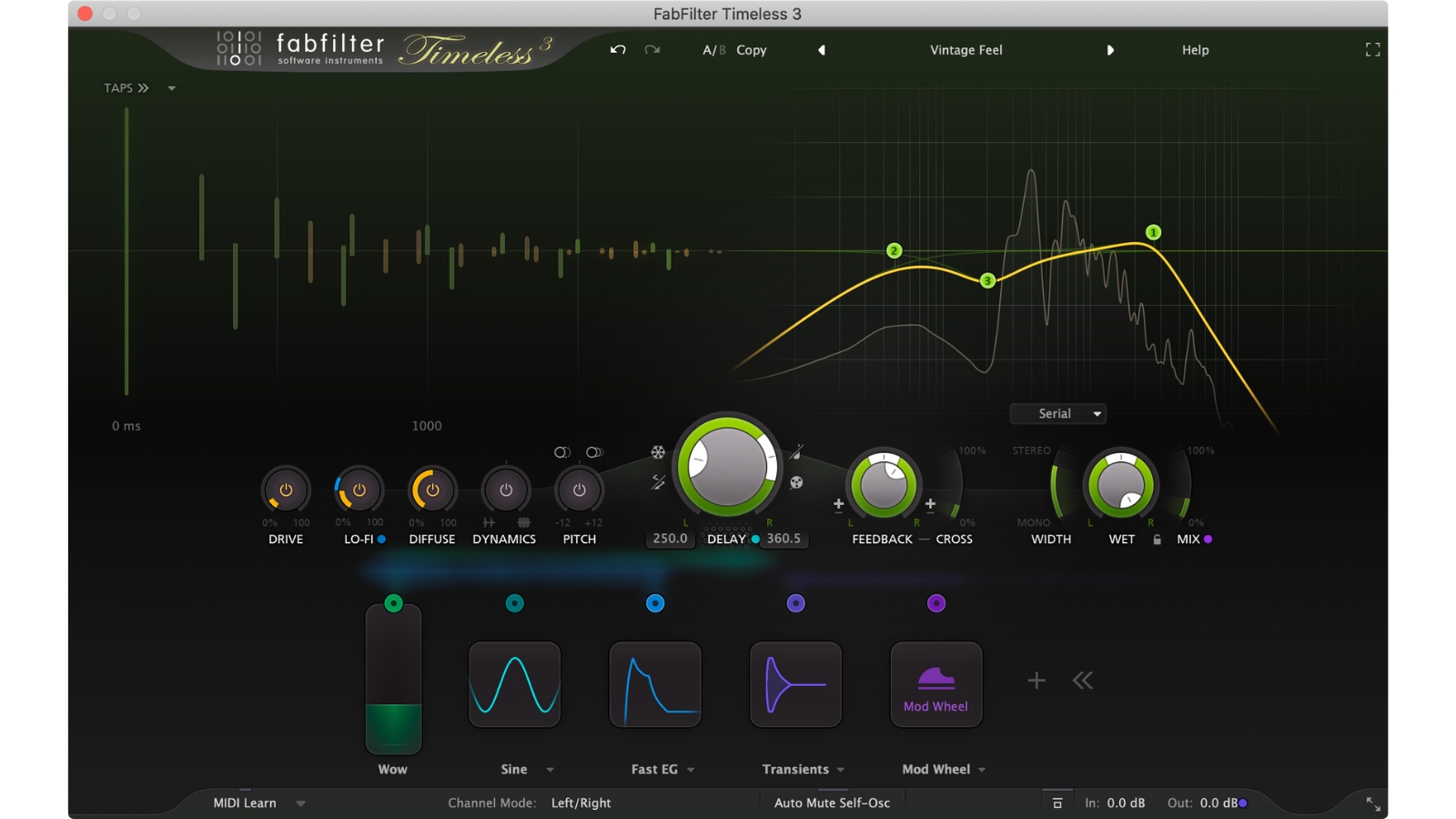
3. FabFilter Timeless 3
Our expert review:
Specifications
Reasons to buy
Reasons to avoid
FabFilter Timeless 3 carries the moniker ‘vintage tape delay’ - but that’s selling it somewhat short. It does analogue delay emulations exceedingly well, of course, but we’ve no doubt that you’ll find yourself veering wildly away from anything that sounds remotely traditional when you get your hands on it.
The layout is remarkably simple, despite the depth that lies beneath. Dual-concentric knobs placed in the middle of the GUI give you controls for delay, feedback, and mix, and provide both rate and panning options in one control. Above you’ll find visual cues on your delay time and EQ whilst modulation options are at the bottom.
The tap and filter grids offer an amazing number of customisation options, and that’s before you even get into any DAW automation. The modulation section support a massive 50 modulators, meaning the only limit on your delay sound is your own imagination.
Considering the price and the options available, this is one delay plugin that should be in every producer’s collection.
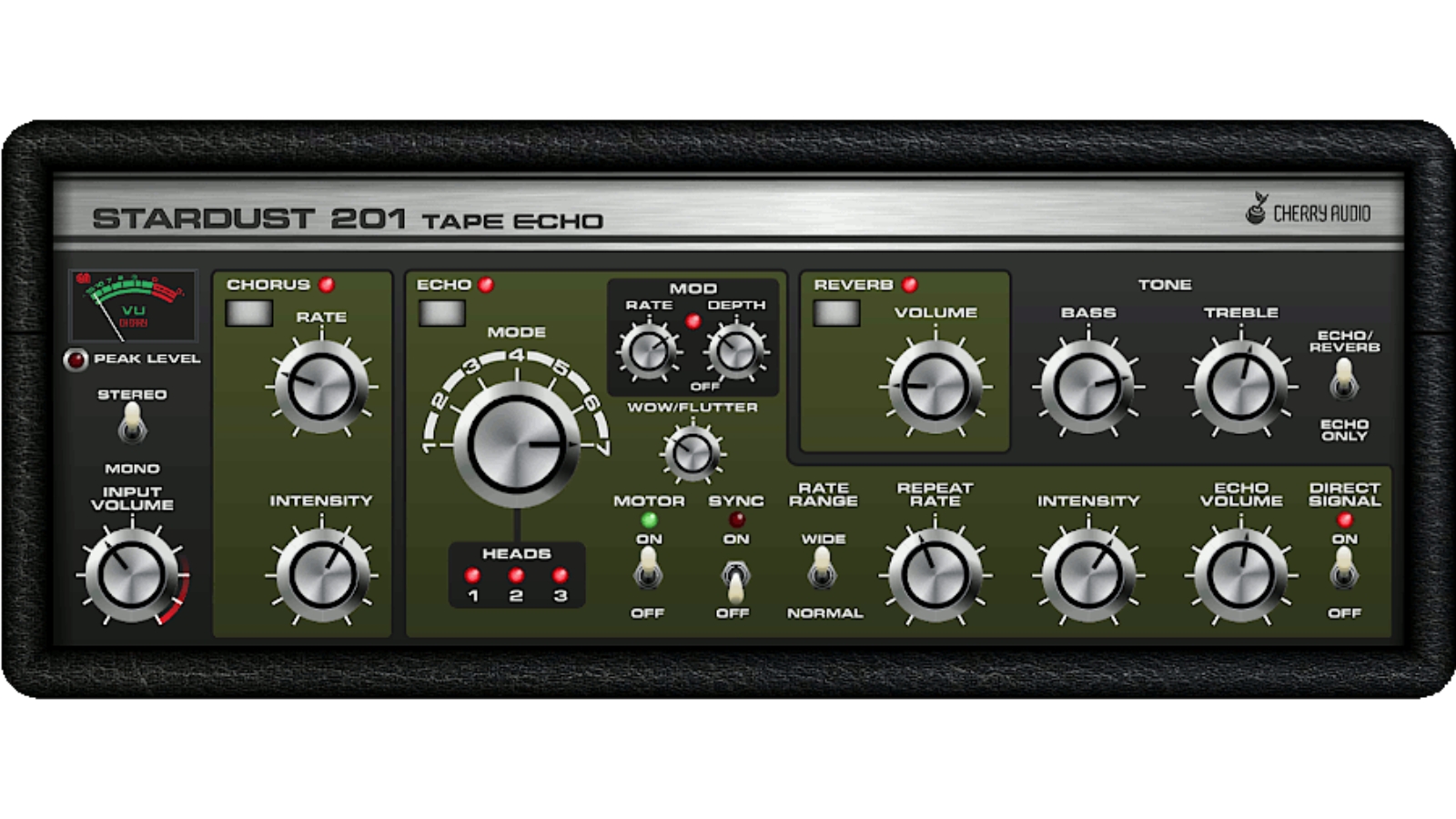
4. Cherry Audio Stardust 201
Our expert review:
Specifications
Reasons to buy
Reasons to avoid
There’s a plethora of different emulations of the famous Roland Space Echo, but Cherry Audio’s Stardust 201 get’s super-close to the original without forcing you to fork out. It’s got all the options the original had, plus a few tweaks for usability’s sake, making it a brilliant bargain tape echo plugin.
When you load up the interface you’ll be greeted with a familiar sight for many mix engineers and producers. LEDs visualise which of the replay heads are active, whilst a mono/stereo switch is a handy addition, and a MIDI control section has been put in for extra versatility.
It has all the characteristics of the real deal, including the pitch wobble, wow, and flutter that made the space echo a stone-cold classic. It even does that dub-type sound when you dial up the intensity control.
There are probably more painstakingly accurate emulations out there, but for the money, you can’t do much better than this.
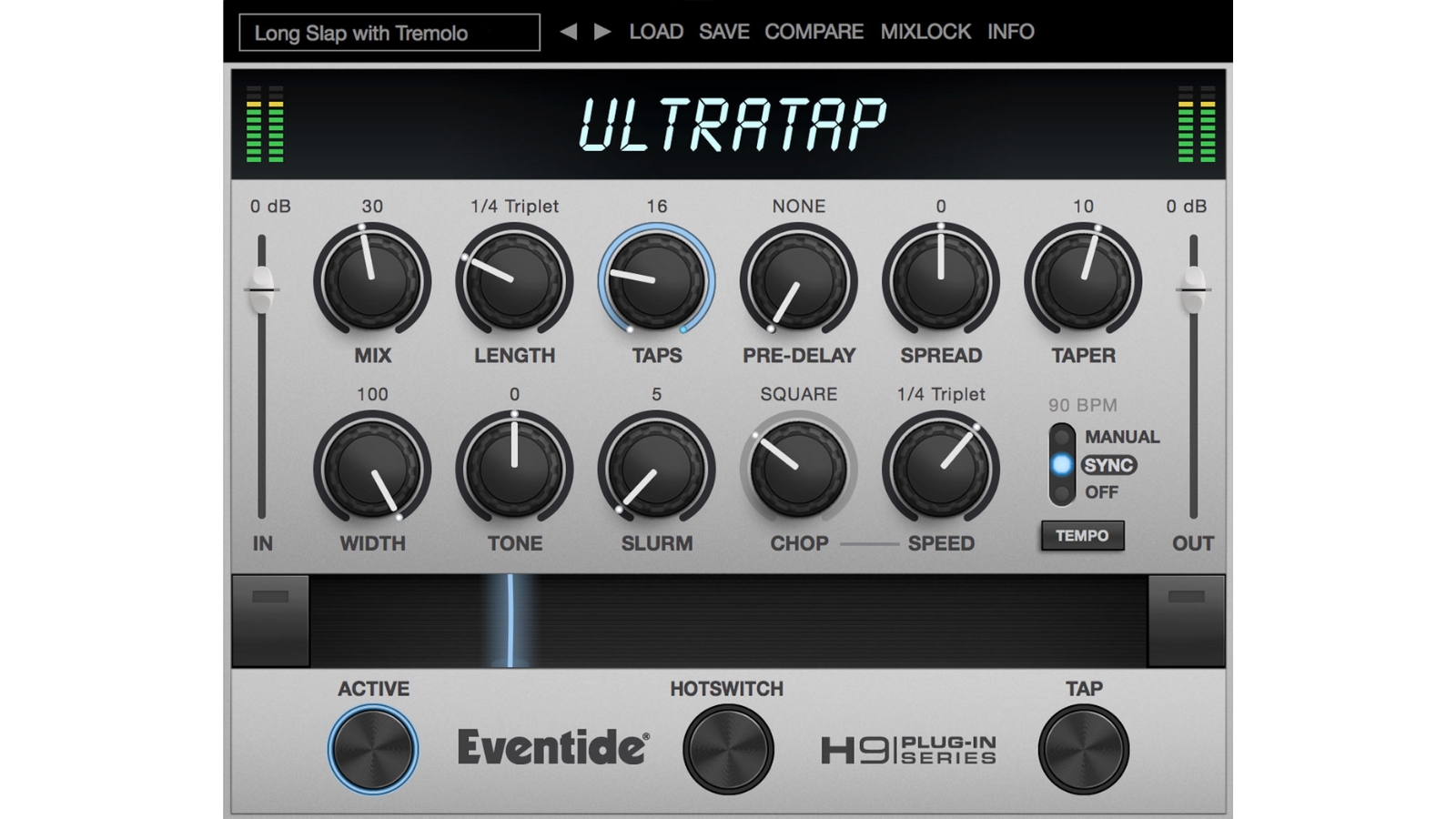
5. Eventide Ultratap
Our expert review:
Specifications
Reasons to buy
Reasons to avoid
Part of the H9 plugin series, the Eventide Ultratap has a simple interface, but is capable of producing some of the wildest delay sounds you’ll ever hear. Be warned: this isn’t your average tape delay emulation, and the applications for this plugin reach far beyond simple slap delay.
All of the controls are available on one screen, with some familiar favourites among them, but you may notice one big omission: there’s no feedback control. Instead, we’re given ‘taps’ which enable you to dial in how many delay taps you want.
There are some other interesting controls here, too, such as ‘slurm’. This isn't, in fact, a fictional soft drink, but instead controls multi-voiced detuning, modulation, and reverb. Plenty of other outlandish sounds are possible, too, with comb filtering, driven delay tails, swells, and reverb-style effects all coming into play.
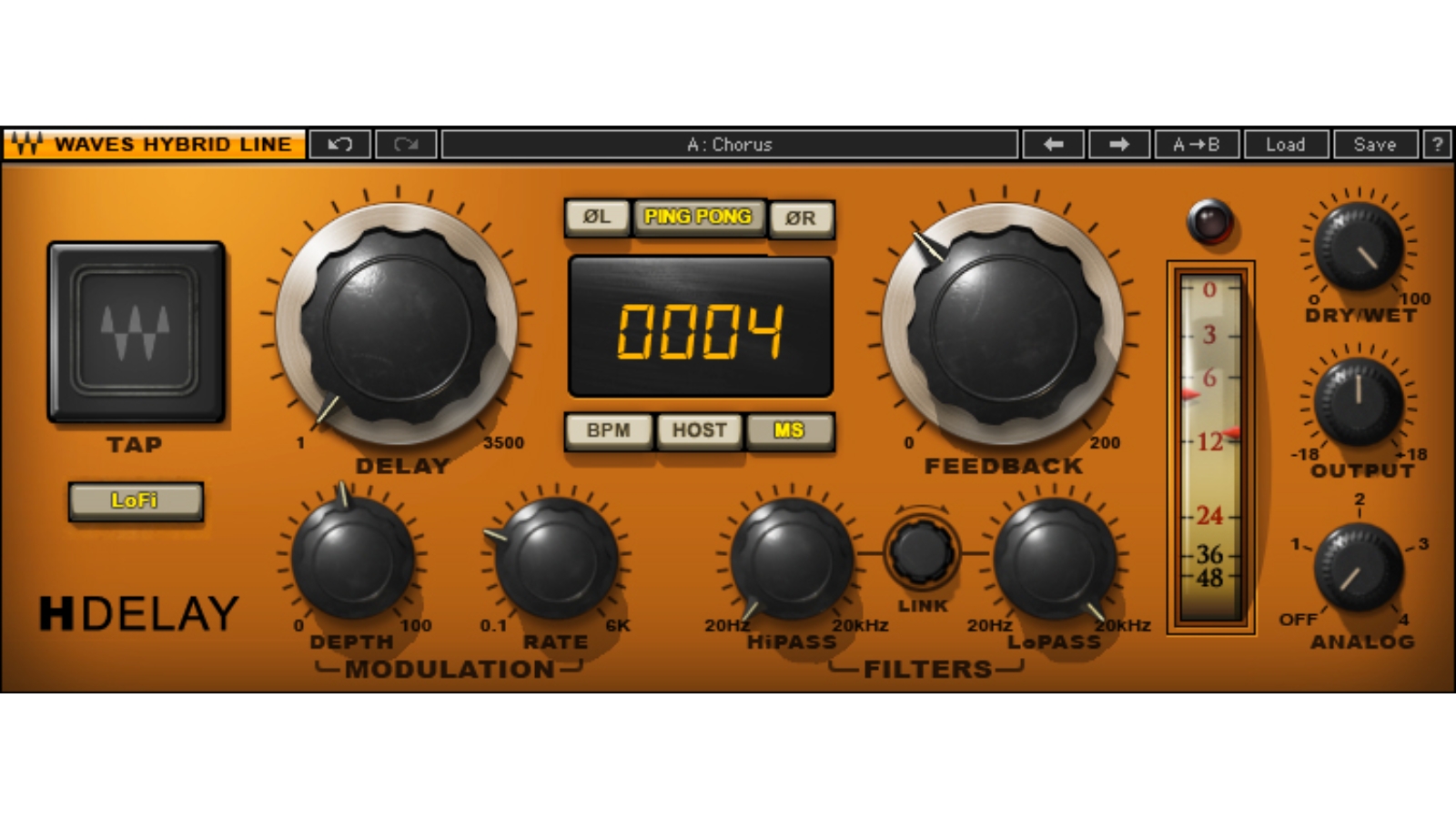
Specifications
Reasons to buy
Reasons to avoid
Based on some classic hardware digital delays, Waves H-Delay has been a stable plugin for producers for a long time now. With a wide-ranging set of controls and an easy-to-use interface, it’s easy to dial in a great sound with.
With just a handful of controls, this is one of the simpler-looking plugins on this list. Within that however, the controls themselves offer plenty of flexility, giving you up to 3500ms of delay, a huge range of high- and low-pass filters, as well as +/-18dB on the output knob.
One of the things that H-Delay does best is that pitch-shifting echo sound you find on genuine vintage delay units. Switch up the LFO speed on the fly (or automate it) and you can use it for those wild, bending delay tails minus any artefacts. The analogue tape options are great, too, adding saturation to different frequency bands.
Read the full Waves H-Delay review
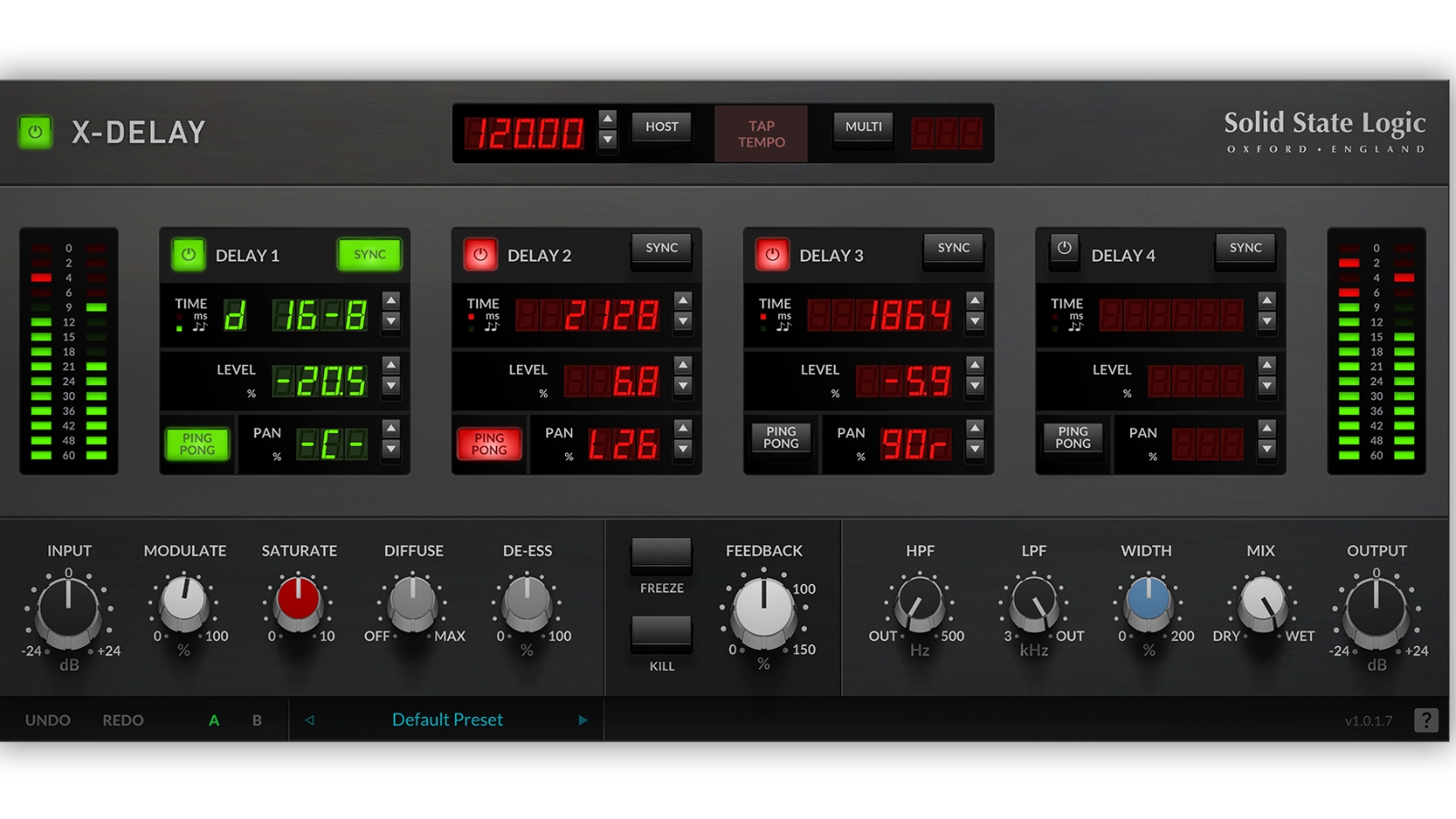
7. SSL X-Delay
Our expert review:
Specifications
Reasons to buy
Reasons to avoid
Designed to give you a bunch of classic digital delay units in one handy plugin, the SSL X-Delay takes inspiration from big names like Lexicon and Roland, providing a full palette of delay sounds to paint your mixes with.
The interface is lovely to look at and clearly laid out, with your four delay taps taking centre stage. Here you can mess with the timing, gain, and panning of each, setting up loads of different creative delay combos. Below this, there are fine-tuning options, with the usual suspects such as high- and low-pass filters, feedback, and modulation controls.
The controls all feel very musical when you’re tweaking, lending themselves well to creative exploration. Far surpassing the possibilities of the classic digital delay units it emulates, the X-Delay is a fantastic tool to enhance your mixes.
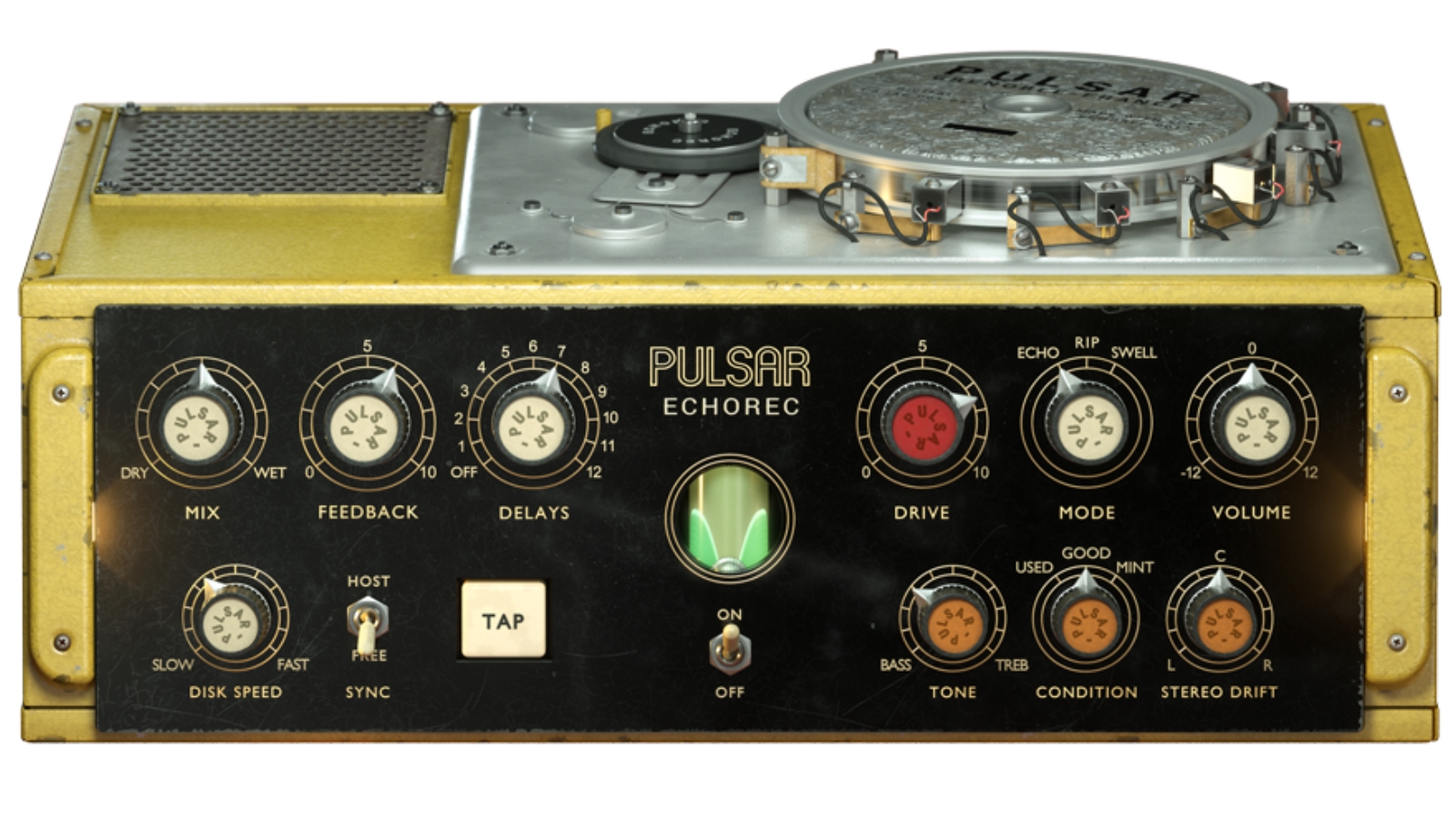
Specifications
Reasons to buy
Reasons to avoid
Based on the classic magnetic drum delay that gave us the iconic sounds of John Bonham’s drums and David Gilmour’s guitar, the Pulsar Audio Echorec is a superb emulation of one of the most famous analogue hardware units ever made.
Like the original, the four tape heads are controlled by a single knob, with all the possible configurations accessible from here. It’s initially confusing if you’ve never used one before, but you’ll discover your favourite settings the more you use it. You also get your typical delay controls such as feedback and mix, as well as an option to add drive and change the disk speed.
The delay sound is a dark one but it’s lively, and you’ve got three flavours to play with. Echo makes the feedback knob defunct - you just hear each tape head once; Rip activates the feedback knob, allowing for incredible self-oscillation sounds; and Swell mode feeds all four of the heads to the output, creating a reverb-like effect.
Read the full Pulsar Audio Echorec review
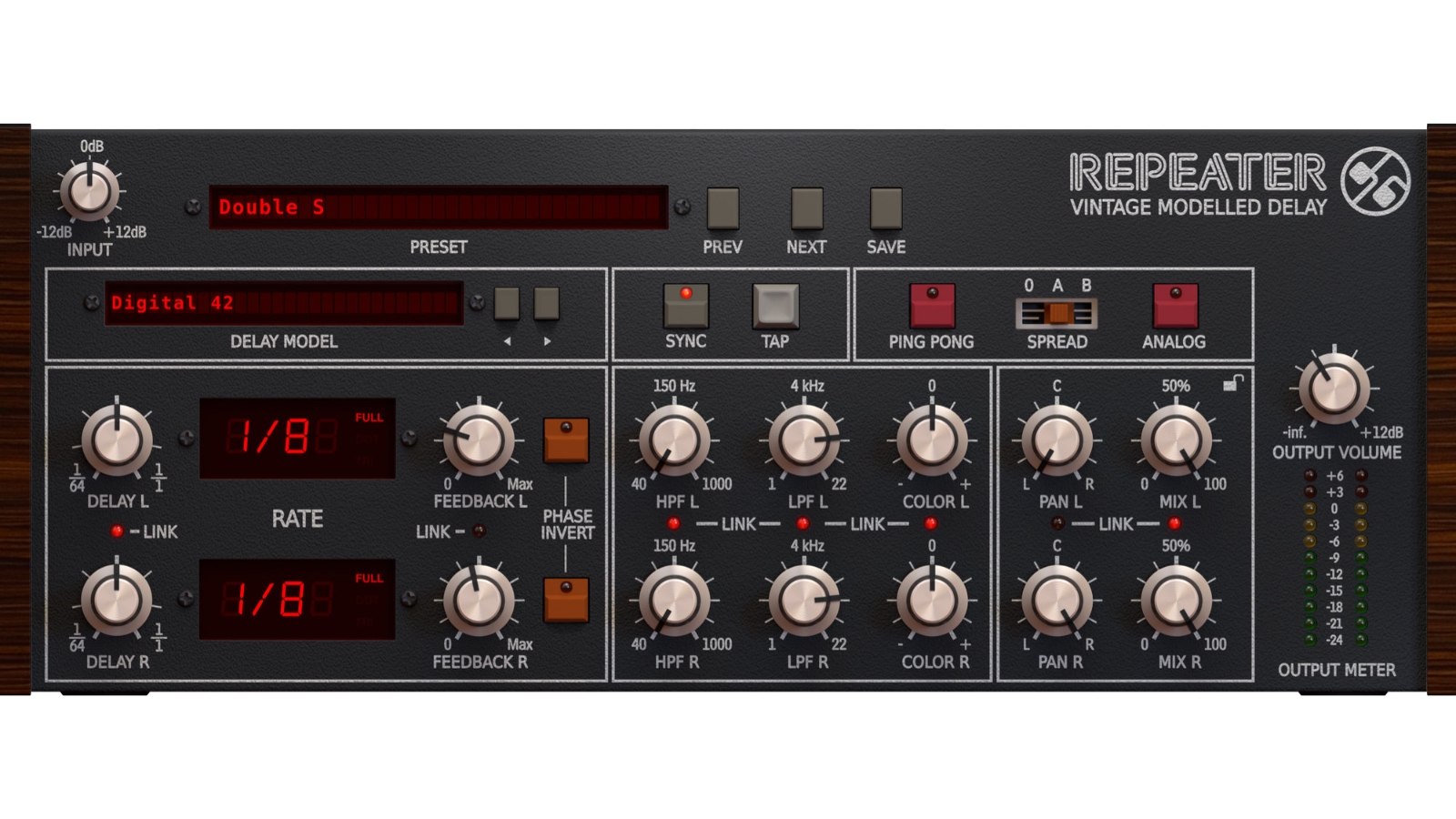
9. D16 Group Repeater
Our expert review:
Specifications
Reasons to buy
Reasons to avoid
If you’re not sure what kind of delay type you want, why not have all of them? That seems to be the exact question that crossed the mind of the developers when they put together the D16 Group Repeater. Instead of just modeling one delay unit, they’ve only gone out and done pretty much all of them.
The GUI is laid out in a fashion that is easy enough even for the uninitiated to understand. All your classic delay controls are present, with the nice option of left and right channels for each. So whether you want to create cool ping-pong sounds or just keep them to one side, you’ve certainly got plenty of control.
In terms of actual sounds, there are a lot of choices here. Everything from warm, slapback delays that sound great on vocals to your ambient, experimental types that oscillate infinitely are available.
With models based on everything from '40s style tape delays right through to clean-as-a-whistle digital delays, you won’t run out of sound choices with this one.
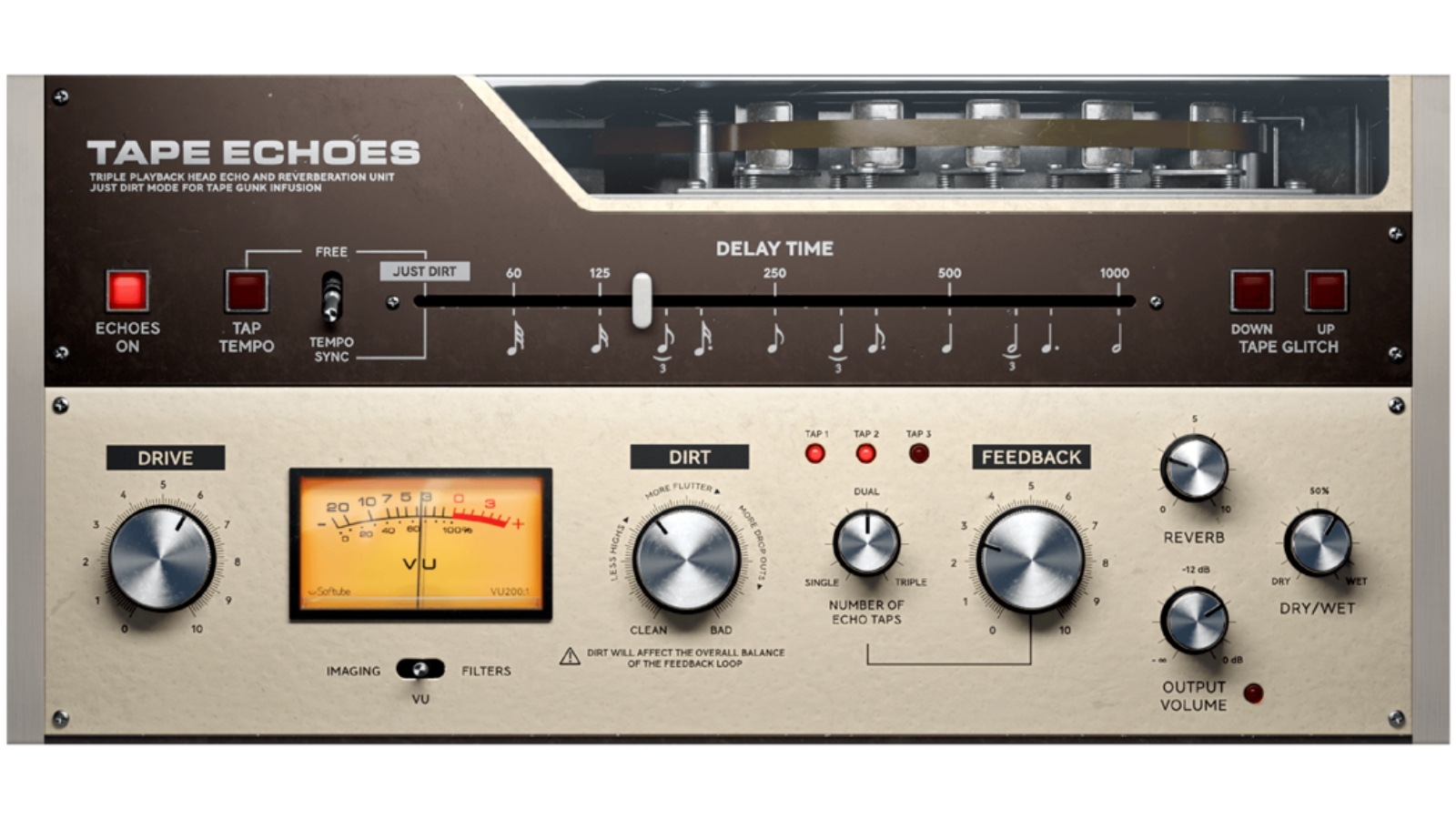
10. Softube Tape Echoes
Our expert review:
Specifications
Reasons to buy
Reasons to avoid
Marrying a range of classic tape machines together, Softube Tape Echoes gives you sounds both classic and modern, letting you subtly increase the harmonic content of your tracks, or just blow them right out of the box.
A slider sets your delay intervals, with a tap tempo and tempo sync if you want to lock things in. Below is a range of controls that let you set the parameters of your delay, add dirt and drive for extra character, as well as adjust whether it runs in parallel or not.
There’s a definite emphasis placed on the drive and dirt sections here; they’re the real meat in this delay sandwich. Drive gives you that lovely saturation, whereas Dirt controls the quality of the delay, so you can make things sound ultra-lo-fi if you want. We’d have liked a little more control over everything, but the simplicity does promote quick use, preventing you from getting caught up in turning knobs and flicking switches.
Best delay plugins: Buying advice

If you’re buying a delay plugin for the first time, be warned: it won’t be the last. Delay is an incredibly useful effect - a must-have in any producer's toolbox that can be used to make things sit better in the mix or just add some crazy infinitely oscillating swirls of noise if that’s what you’re into.
There are a lot of different types of delay out there, so it’s definitely worth reading up on the ins and outs before you make a decision to purchase. All of the delays in this article will no doubt help to improve your mixes, but knowing how and when to use them is the key.
What are the main types of delay?
There are countless types of delay plugins. However, for the purpose of simplicity, we’ll break it down into three major categories you’re likely to come across.
Tape delay - the one that started it all, a tape delay works by printing the dry signal onto a piece of tape before delaying a certain amount of time and playing it back. In the process of printing, the audio becomes warmer and smoother sounding, an effect which, to this day, musicians and producers still love the sound of. Keeping and maintaining tape delay units, however, is notoriously difficult and expensive, hence why most musicians tend to use plugins.
Analogue delay - coming into the limelight due to the aforementioned issues with tape delay maintenance, the analogue delay also uses moving parts, such as magnetic drums or discs, but has capacitors to store and move the signal. Due to the way they work, you get a treble loss on each repeat of your delay, which results in a warm and dark delay tone that sits well in the mix.
Digital delay - lastly we have the child of the '80s in digital delay. Thanks to improvements in computer technology, digital signal processing was able to make use of algorithms to create pretty much any delay sound you can think of, and plenty more you can’t. Digital delays, thanks to their cleaner sound, tend to cut through the mix more, making them great for added FX or dense arrangements.
There are some delay units that don’t quite play by the rules - Eventide’s Ultratap, for example - but for the most part, delay plugins will fall into one or more of these categories.
What does a delay plugin do?
Both reverb and delay are time-based effects, and a lot of their uses cross over with one another for that reason. The main difference between the two is that reverb creates a sense of physical space, whereas delay takes your original signal and plays it back to you.
That said, some delays can give you reverb-type sounds, and some reverbs are short enough that they could be considered a slapback delay. But for the most part, the two effects can be utilised with one another to help bring a sense of space and life to your mixing.
How can I use a delay to create a sense of depth in my mix?
There are so many ways you can use delay and each mix will offer a different level of potential for the use of the effect. But there are a few timeless ways of using delay that will enhance your tracks.
A lot of producers make the mistake of adding too much reverb to their tracks. If you find yourself adding reverb and muddying up the sound, try a delay instead. Delays can add a sense of space without hanging around for too long, resulting in a snappier feel to your track.
Using delays on drums or other percussive elements can really help with adding movement to your tracks. Many delay plugins offer a way to sync to the tempo of your DAW, meaning the delays bounce along with the music, creating entirely new elements of groove to turn that stock hi-hat sample into something completely unique.
The most important thing is to experiment with delay for different effects. You’ll come to learn what works and what doesn’t. Turning the delay on and off as you listen to your mix is a great way to see if it adds anything interesting. Try not to spend too much time listening to the track soloed, because this won’t give you a perspective of the overall feel of the song.
Read more about how we test music making gear and services at MusicRadar.
Related buyer's guides
MusicRadar's got your back
- Best guitar VSTs to supercharge your recordings
- Best vocal plugins
- Best drum machine plugins
- Best synth plugins
- Best reverb plugins
- Best saturation plugins
- Best creative multi-effects plugins
- Best compressor plugins
- Best EQ plugins
Want all the hottest music and gear news, reviews, deals, features and more, direct to your inbox? Sign up here.

Matt is a Junior Deals Writer here at MusicRadar. He regularly tests and reviews music gear with a focus on audio interfaces, studio headphones, studio monitors, and pretty much anything else recording-related. Matt worked in music retail for 5 years at Dawsons Music and Northwest Guitars and has written for various music sites including Guitar World, Guitar Player, Guitar.com, Ultimate Guitar, and Thomann’s t.blog. A regularly gigging guitarist with over 20 years of experience playing live and producing bands, he's also an alumnus of Spirit Studios, where he studied studio engineering and music production.